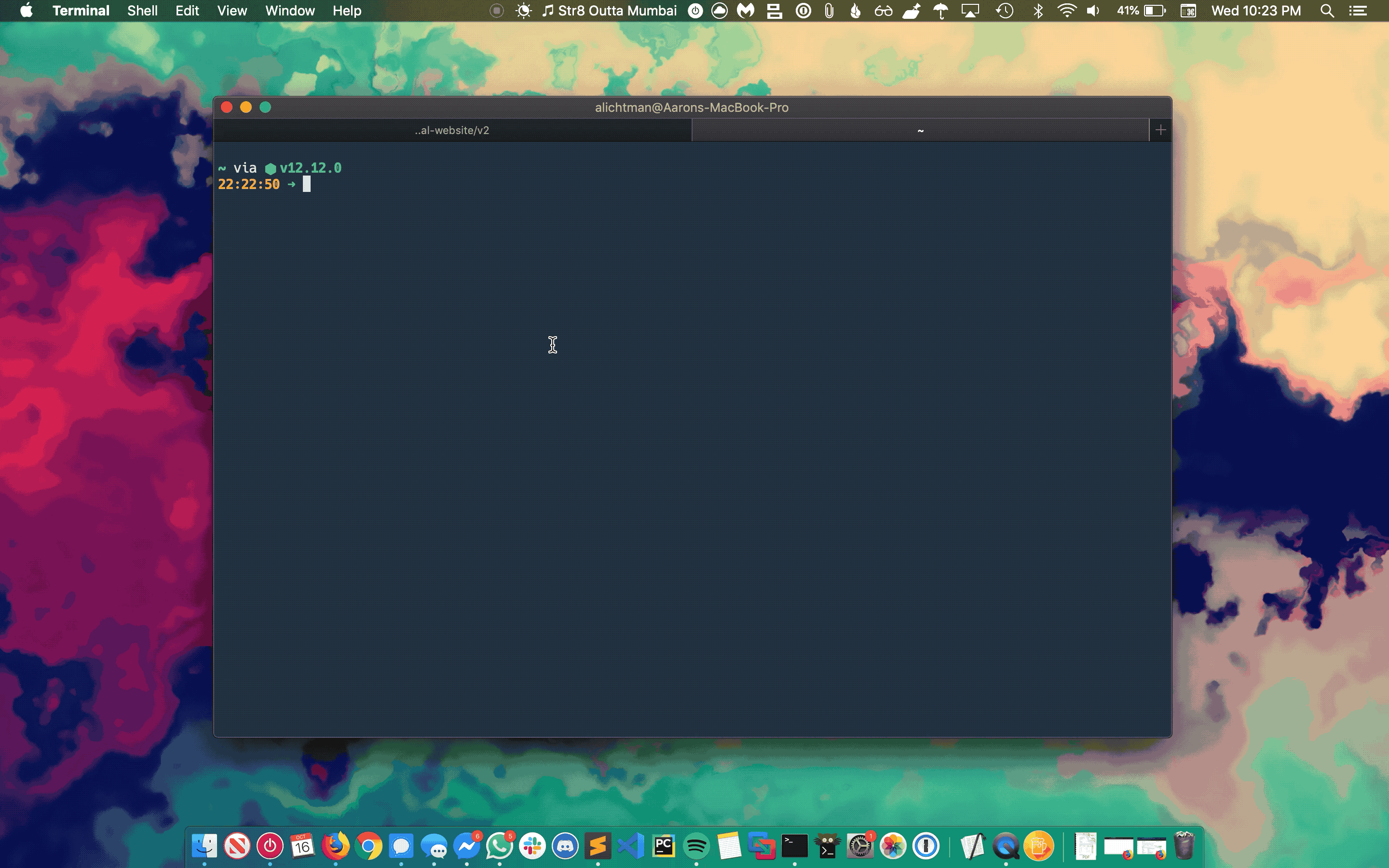Launching Apps from the macOS Terminal

9/5/2020 Update: Siddharth Dushantha cleaned up this function and added the ability to launch system apps in this PR. The updated function is:
function launch() {
open -a "$(find /Applications /System/Applications/ /System/Applications/Utilities -name '*app' -maxdepth 1 -exec basename {} .app \; | fzf --query "$1")"
}
The original post can be found below.
Using fzf and Unix pipes, I hacked together a fuzzy command line launcher for zsh. You can add this snippet to your .zshrc to get this functionality. Remember to source your ~/.zshrc to process the changes in your shell session.
launch () {
open -a "`find /Applications -name '*app' -maxdepth 1 | cut -d'/' -f 3 | cut -d'.' -f 1 | fzf --query=$1`"
}
How It Works
Let’s walk through the process of building this tool.
The first thing we need is a list of all the applications in the /Applications directory. We can get this with the find command.
$ find /Applications -name '*app' -maxdepth 1
/Applications/Siri.app
/Applications/Visual Studio Code.app
/Applications/OWASP ZAP.app
/Applications/QuickTime Player.app
/Applications/Signal.app
...
We could just display this list in fzf for a user to choose from, but I’d like to clean up the app names by removing /Applications/ and .app from each option. We can do that by joining two cut commands. This first cut trims everything before the 2nd /.
$ find /Applications -name '*app' -maxdepth 1 | cut -d'/' -f 3
Siri.app
Visual Studio Code.app
OWASP ZAP.app
QuickTime Player.app
Signal.app
...
Then we pipe that into a second cut to get rid of the .app suffix.
$ find /Applications -name '*app' -maxdepth 1 | cut -d'/' -f 3 | cut -d'.' -f 1
Siri
Visual Studio Code
OWASP ZAP
QuickTime Player
Signal
...
And now we can pipe this into fzf to get a nice, fuzzy-searchable interface.
$ find /Applications -name '*app' -maxdepth 1 | cut -d'/' -f 3 | cut -d'.' -f 1 | fzf

That’s nice, but sometimes I know a portion of the app name and can start searching before the fzf prompt is brought up. We can implement that with fzf’s --query option. If we wrap this command inside a zsh function, arguments can be passed to it.
launch () {
find /Applications -name '*app' -maxdepth 1 | cut -d'/' -f 3 | cut -d'.' -f 1 | fzf --query=$1
}
This function will go through the process of extracting all application names and displaying them in a fzf window, and will also pre-fill the fzf search with an argument you can pass in, like this:
$ launch Spotif
# Note that this will still work with no search parameters, since the first argument ($1) will evaluate to ""
$ launch
At this point, we are able to search through a list of applications and get whichever one is selected printed to standard output by fzf. Now, we need to actually open whatever is selected. macOS comes with a nice tool to open files and applications, called open. Check out $ man open if you’re interested in learning more about it.
We can use it by simply piping the output from fzf into the open command with the -a flag, specifying we want to open an Application. To make this work, we need to use a bash feature called “Command Substitution”. This will allow us to use the standard output of the fzf command in another command to actually open the application.
launch () {
open -a "`find /Applications -name '*app' -maxdepth 1 | cut -d'/' -f 3 | cut -d'.' -f 1 | fzf --query=$1`"
}
Note: The surrounding double-quotes on the command substitution are important for handling cases where the app name contains a space. Let’s take a look at an example:
$ open -a QuickTime Player.app
The file /Users/alichtman/Player.app does not exist.
# Error!
$ open -a "QuickTime Player.app"
# QuickTime opens
In the first example, the shell split the arguments to open -a on the space, treating QuickTime and Player.app as two separate files to open. The double-quotes tell the shell not to word split.
Parting Words
Shell scripting is a little tricky at first (and continues to be tricky, even as you get better at it), but you can create some incredibly powerful workflows with it. It’s well worth investing the time in learning some basic shell scripting!
If you enjoyed reading this walkthrough, take a look at my dotfiles to find some more shell workflows I use regularly.
